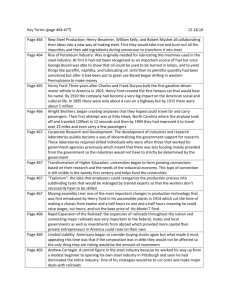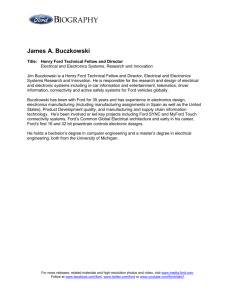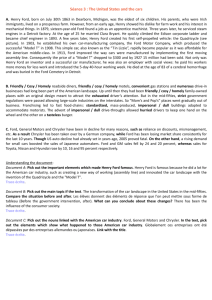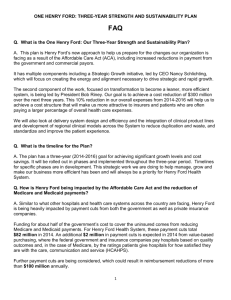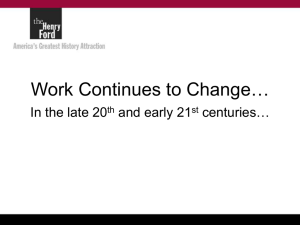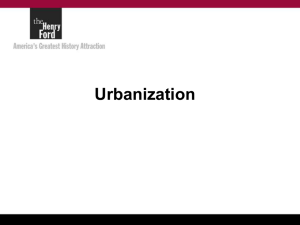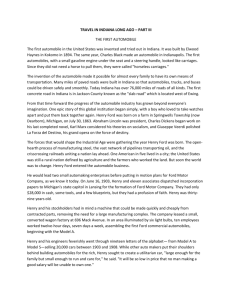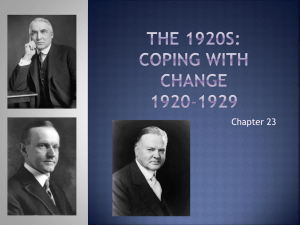How did Henry Ford change the world?
advertisement
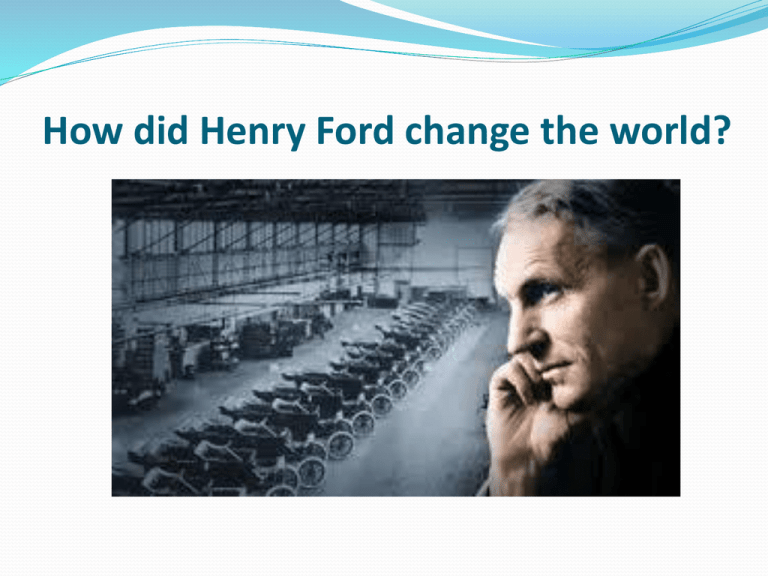
How did Henry Ford change the world? Learning objective – to be able to explain the impact of Henry Ford’s mass production techniques. I can describe how mass production worked in the car industry. Grade D I can explain some of the ways mass production changed the way people lived in 1920s USA. Grade B I can explain and assess the economic and social impact of mass production on the USA . Grade A Starter question – what percentage of cars in America in 1926 were made by Henry Ford? 50% of cars in America in 1926 were made by Henry Ford. Who was Henry Ford? Henry Ford was from a farming family of immigrants from Ireland and Holland. He had an interest in mechanics and was self-taught, building his own petrol-driven car in 1896. He loved car racing and used the winnings from racing to set up his own business – Henry Ford Motor Company in Detroit. He was frustrated in the length of time it took to make cars and, in 1911, started experimenting with an assembly line and mass production techniques in order to quicken production. What were the key principles behind mass production? Standardisation - Ford made just one kind of car so that all the parts were a standard size and shape. This saved on time, labour and money. Division of labour – each worker worked on a specific part of making the car. This made assembly much quicker as each worker became an expert on a specific task. Moving assembly line – each worker stayed in one place as a the car was moved to them on a conveyor belt. All this quickened production to the extent that a car was made in 1 hour and 33 minutes compared with 12 hours beforehand. How did the assembly line work? What was the Model T? Ford’s Model T car became – an affordable car for ordinary people’. Although it was slow and ugly, it was reliable and easy to maintain. It also became very cheap to build. It was black because the paint was the quickest to dry. By 1926, 50% of cars on the road was a Model T. What was the impact of mass production techniques? Imitation – many other industries – particular those making domestic goods – copied Ford’s mass production template. Cheaper goods – mass production allowed goods to become cheaper as they were made faster and cheaper. Model T car cost $850 in 1919- in 1926 the same car cost $295. More people could now own luxury goods. Employment opportunities – not only did car factories need more workers but so did the linked industries. For example, 75% of leather, glass and rubber were used by the car industry. 4 million workers in total depended on the car industry. Spending power – with more employment opportunities more people had more money to spend. Travel – with the growth of the car more money was invested in road building and garages meaning travelling became quicker and easier more often meaning people were spreading their spending. Tasks Complete the tasks on the worksheet. These tasks will help you make the key notes on mass production. Extension tasks Design an advert for a Model-T car highlighting its key selling points. OR Design a job advert for a worker at Henry Ford Motor Company.


